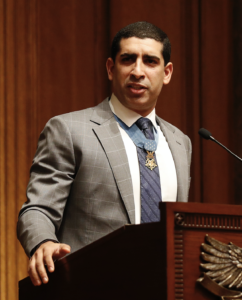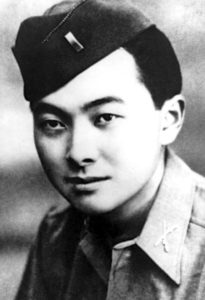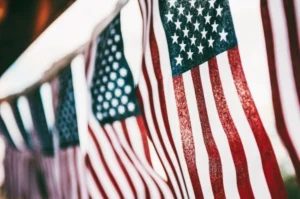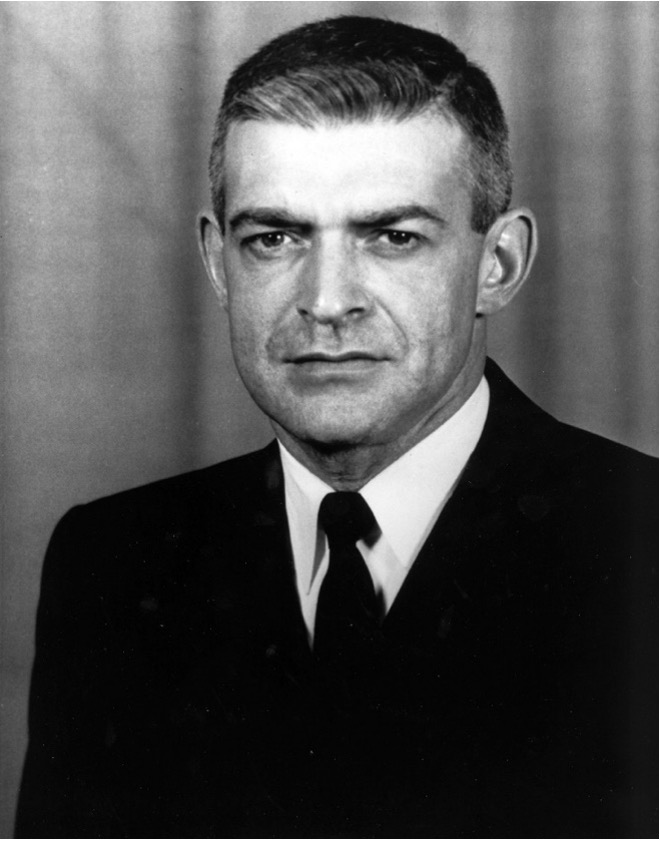
Lieutenant, U.S. Navy, Vietnam War
Vincent R. Capodanno was a U.S. Navy chaplain who earned the Medal of Honor while serving with the Marines during the Vietnam War. Born in Staten Island, New York, Capodanno was ordained a Roman Catholic priest in 1958. He joined the U.S. Navy Chaplain Corps in 1966 and, after completing Officer Candidate School, was immediately posted to Vietnam, where he was attached to the U.S. Marines Corps. During his service Capodanno established a reputation for selfless dedication to the men, sharing their hardships and working for their spiritual and practical welfare. Capodanno was so beloved by the men that he acquired the moniker “The Grunt Padre.” On September 4, 1967, Capodanno embedded himself with one of the companies taking part in the mission. During a bloody firefight, Capodanno repeatedly exposed himself to retrieve wounded soldiers, deliver last rites, and bring comfort and aid in the heat of the battle. Capodanno was severely wounded twice and refused treatment or requests to withdraw. Finally, going to aid a wounded medical corpsman under enemy fire, he was killed in action. His posthumous Medal of Honor was presented to his family on January 7, 1969.
Early Life
Vincent Robert Capodanno, Jr., was born on February 13, 1929, in Staten Island, New York. He was the tenth and youngest child of a father who had immigrated from Italy in 1901 and a mother who was of Italian heritage but born in the United States. He attended public schools in Staten Island and was in high school during World War II when three of his brothers served in the military. Graduating in 1947, Capodanno attended classes at Fordham University but soon discerned a religious calling, and particularly to missionary work. In 1949 he was admitted to the Catholic Foreign Mission Society’s seminary, more commonly known as Maryknoll. Completing this training, the Archbishop of New York, Francis Cardinal Spellman ordained him a priest in June 1958. During the following year, Father Capodanno undertook missionary work that would take him to Taiwan and Hong Kong. Frustrated by the challenges in mastering local Chinese dialects and unsatisfied with his assignments, Capodanno repeatedly asked for approval to transfer to the Navy Chaplain Corps and to serve with U.S. combat troops in Vietnam. Despite some initial reluctance, his Maryknoll superiors granted him permission, and Capodanno graduated from the U.S. Navy Chaplain Corps in Newport, R.I., on December 28, 1965 and received a commission as a Navy lieutenant.
The Grunt Padre
Lt. Vincent Capodanno wanted to be immediately posted to a Marine combat unit in Vietnam – a request that was granted given his prior experience in Asia. At the time, very few Chaplains were assigned to front-line combat units right from Chaplain’s school. Acceding to his wishes, Capodanno was first assigned to the 7th Marine Regiment near Da Nang
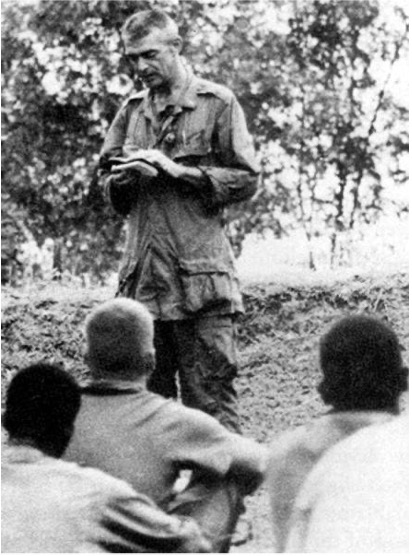
Father Capodanno catered to the men of all faiths. His dedication to the common men—the “grunts”—became legendary. He regularly accompanied his fellow Marines on marches and into action, even when that sort of risk-taking was rare. “I want to be available in the event anything serious occurs,” he explained, “to learn firsthand the problems of the men, and to give them moral support, to comfort them with my presence. In addition, I feel I must personally witness how they react under fire—and experience it myself—to understand the fear they feel.” Capodanno would frequently inquire from the regiment’s intelligence officers as to which of the 7th Marines’ companies was most likely to be engaged and would then seek to embed with them as they went out on patrol. Capodanno would receive a Bronze Star for his actions with the 7th Marines in 1966 – a decoration that he made almost no mention of during his life.
In December 1966, Capodanno was assigned to the regiment’s 1st Medical Battalion stationed at Chu Lai’s field hospital in South Vietnam. Here he continued his dedicated service, this time to the many wounded who passed through the hospital. Seeking and receiving a six-month extension of his tour of duty in the spring of 1967, Father Capodanno visited home in the United States for a month. He then returned to Vietnam, where he was assigned to the 1st Battalion of the 5th Marines fighting in the Que Son Valley.
Medal of Honor Action
On September 4, 1967, a platoon of the 1st Battalion, 5th Marines located in the Que Son Valley, radioed for assistance after it was attacked by units of the North Vietnamese Army (NVA) and Viet Cong (VC). In response, the 1st Marine Division launched Operation Swift, an action to reinforce and rescue the beleaguered Marine companies. When Capodanno learned of the impending movement, he immediately sought to join the troops headed for battle. Informed that it was unheard of for a chaplain to accompany a line unit being inserted into a hot combat zone, Capodanno secured the Battalion commander’s reluctant approval to join the mission. Soon Capodanno was with the men of Company M, 3rd Battalion as they flew by helicopter to a nearby landing site.
After delivering absolution and communion to several of the Marines, Capodanno took up position with the Company M leadership in a crater near the crest of a protective ridge. But as panicked reports of growing casualties started flowing into the command post, Capodanno left to join the men facing the worst. Leaping out of the crater on his own volition, Father Vincent crossed the ridge, and ran across fields raked by enemy fire. He first grabbed PFC Stephen Lovejoy by the straps of his heavy backpack radio and pulled him over the ridge to safety. “I would never have made it up that hill without the Chaplain” stated Lovejoy. With Lovejoy now safe, Capodanno ran back through the thick of the action towards a mortally wounded Corporal Stephen Connell and gave him last rites while the bullets flew nearby. With NVA and VC soldiers pressing all around at close range, the Marines fired tear gas into their own position. When another Marine could not find his gas mask, Capodanno gave him his and refused all others offered him.
Capodanno then ran towards a wounded Sergeant Lawrence Peters, one of the platoon leaders. Despite being struck in the right arm by mortar shrapnel, Capodanno gave Peters his last rites and stuck by his side, comforting the warrior until he died. Peters would later receive the Medal of Honor posthumously.
While nearby Marines were yelling, “Father get down!” Capodanno came to the aid of five more wounded Marines. Despite his wounds, Capodanno then dragged Sergeant Howard Manfra to safety – an action that saved Manfra’s life. And it was not just his aid and ministry that was of such value to the Marines, his intrepid example also inspired many.
“The Chaplain’s example of action gave courage to everyone who observed him and sparked others to action. Quite a few more people would have died if not for him.”
Coporal David Brooks, USMC
Later in the action, Capadanno was wounded a second time – taking shrapnel in his right hand, leg, and arms. He repeatedly waived off attempts by those seeking to treat his wounds and to evacuate him to safety.
As the sun began to set on the long day, Capodanno was not done being of service to his men. With cries of “Corpsman! Corpsman!” filling the air, both the corpsman, Armando “Doc” Leal, and Vincent Capodanno raced over to the side of Corporal Ray Harton. Shortly after arriving at Harton’s side, Doc Leal was hit by nearby gunfire and mortally wounded in the upper leg. Capodanno moved quickly to Leal’s side and was killed instantly by rounds from an enemy machine gun just yards from his position. Some Marines close by would later claim that the chaplain purposely interposed his body between the machine gun and the wounded nearby.
When the Marines were finally able to recover his body after the battle, Father Vincent Capodanno was reportedly found with his right hand over his breast, his eyes shut, and with a slight smile on his face.
The loss of their beloved Grunt Padre was a devasting and emotional blow, even to those who had already suffered so much in battle.
Burial and Honors
Father Vincent Capodanno’s body was flown home, where he was buried in St. Peter’s Cemetery, Staten Island, on September 19, 1967. His honorable service and sacrifice were recognized almost immediately. In February 1968 the Navy Chaplains School where he had studied dedicated its chapel to Father Capodanno. And on January 7, 1969, the priest’s brother James received his posthumous Medal of Honor from Secretary of the Navy Paul Ignatius. Three years later, on October 21, 1972, the frigate USS Capodanno (DE-1093) was launched, and it would remain in service until its decommissioning in 1993. Numerous chapels, memorials, and awards have been dedicated to Father Capodanno, and the Roman Catholic Church began consideration of his cause for eventual canonization as a saint in 2002.
“It was precisely because he loved life – the lives of others – that he so freely gave his own…”
-Chaplain Eli Takesian’s eulogy for Vincent Capodanno
Medal of Honor Citation
For conspicuous gallantry and intrepidity at the risk of his life above and beyond the call of duty as Chaplain of the 3d Battalion, in connection with operations against enemy forces. In response to reports that the 2d Platoon of M Company was in danger of being overrun by a massed enemy assaulting force, Lt. Capodanno left the relative safety of the company command post and ran through an open area raked with fire, directly to the beleaguered platoon. Disregarding the intense enemy small-arms, automatic-weapons, and mortar fire, he moved about the battlefield administering last rites to the dying and giving medical aid to the wounded. When an exploding mortar round inflicted painful multiple wounds to his arms and legs, and severed a portion of his right hand, he steadfastly refused all medical aid. Instead, he directed the corpsmen to help their wounded comrades and, with calm vigor, continued to move about the battlefield as he provided encouragement by voice and example to the valiant marines. Upon encountering a wounded corpsman in the direct line of fire of an enemy machine gunner positioned approximately 15 yards away, Lt. Capodanno rushed in a daring attempt to aid and assist the mortally wounded corpsman. At that instant, only inches from his goal, he was struck down by a burst of machine-gun fire. By his heroic conduct on the battlefield, and his inspiring example, Lt. Capodanno upheld the finest traditions of the U.S. Naval Service. He gallantly gave his life in the cause of freedom.
